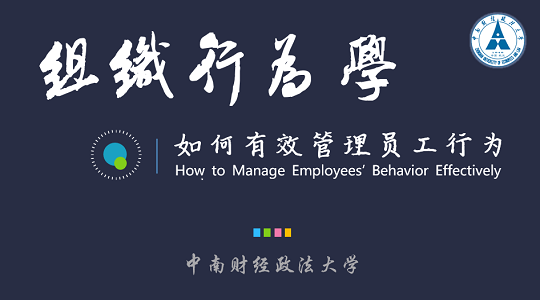
当前课程知识点:国际医学会议交际英语 > Chapter 12 Understanding Conference Etiquette > Exercise > Chapter 7 Part 1-1
Hello
everyone
I'm LiuJuan from Capital Medical University
Welcome to our English for presentations
at international medical conferences
Now we have come to delivery and performing part
We're going to talk about Chapter 7
delivering a presentation
This chapter will help you speak more clearly
present more persuasively
understand more deeply
communicate more effectively
and make connections more easily
This chapter includes 5 parts
also they are 5 stages of academic presentations
They are beginning
Materials and Methods
Results and Discussion
Conclusions and Ending
Acknowledgments
Let’s look at what to say and to do
at each stage of presentation
Part one Beginning
Objectives
upon completion of this section
you are expected to know
the function of the beginning part
of a presentation
Number two
get familiarized with suggested ways
to begin a presentation
Number three
grasp useful phrases on how to begin a presentation
Now let's look at the function part
A good beginning makes for a good ending
This is also true for academic presentation
Approaches to opening vary according to
different speakers and situations
First impressions are lasting
You never get a second chance
to create of good first impression
The truth is
when you start your speech
you must focus on making a positive
first impression on your audience
Your opening often determines how long
the audience will “tune in” to your presentation
If you bore your audience right from the start
they begin shifting in their seats
they begin shifting in their seats
checking their phones
reading the program
talking to one another or doing anything
but paying attention to you
There is little chance that your message
will effectively get across
Now
let's look hard to the suggested ways
to start a presentation
There are many tips and strategies
presenters can use
but the followings are most powerful ones
that good presenters
have used over the years
Hopefully
they will help you to nail the beginning
of your next presentation
One
start your presentation
by getting attention from the audience
Getting your audience’s attention
from the beginning is the most important thing
you can do in starting a presentation
How you introduce yourself and
how the audience react to your introduction determine
at least 30% of the success of your presentation
The audience forms their impressions
of a presenter within approximately 90 seconds
after which it is difficult
to change their opinion
Remembering the importance of capturing
the attention of who you’re speaking to
will set you up for
many other strategies we convey
Two
Welcome audience with a “thank you”
and start your presentation by appreciation
Welcoming your audience with a “thank you”
or “thanks for coming”
shows both sincerity and appreciation
and additionally establishes
the sense of community with your audience
If the greetings and appreciation
used in the beginning of your speech
are modest and sincere
they may establish good will
as well as gain attention
Before the speaker comes to the platform
the chairperson of the conference or session
usually makes a brief complementary introduction
about the speaker
So
it is appropriate
for the speaker to express thanks
to the chair and greet the participants
of the same professional field
Let's look at some examples
However
avoid excessive and hollow compliments
Audiences are quick to sense a lack of genuineness
Audiences are quick to sense a lack of genuineness
on the part of the speaker
and they may react unfavorably
toward any false sentiments
Three
Memorize first opening line
It is a good idea to memorize
the beginning 4 ~10 sentences
This is critical
because it allows you to feel confident
and ride the wave of confidence
as you continue your presentation
The best presenters typically practice
and memorize the beginning
and ending of their talks
Four
Start your presentation straightforward
To come straight to the point without
any roundabout statement
is the most commonly used approach
for example
Five
State your purpose of presentation
and your way to deal with questions
Generally
your audience will know your purpose
or why you’re there
but you have to make it clear to them
For example
In this presentation I am going to discuss
some findings of an international project
Always remember to let the audience know
how you will handle questions
Simply give them the free will to ask questions
when they best see fit
For example
I will welcome your comments at the end
In my presentation
if you have any questions
just raise your hand and let me know
During my talking
if you have any questions
don’t hesitate to ask
I’d be really interested in hearing your questions
when I finish the presentation
Six
Ask the audience questions direct or rhetorical
To start a presentation
you can begin with direct questions
to the audience
It’s a great way to wake up their senses
get them engaged
and get you more connected with them
If you use this technique
wait for a maximum of two seconds
and then continue
Seven
Use “suppose
Use “suppose
imagine
think of
close your eyes”
to get the audience to imagine a situation
One powerful way used by many speakers
is getting the audience to
imagine or think of something
This technique can be useful
in starting off a presentation
Without introducing yourself
or the topic of your presentation
make your first word
of your presentation
“Suppose ”
and then give the audience a hypothetical
situation which relates both to the audience
situation which relates both to the audience
and to the topic of your research
Eight
Show of hands
poll the room
Many presenters get the audience
to raise their hands in response
and create context and commonality
As with the question technique
and give the instruction
such as Hands up if
Raise your hands if
then wait for a maximum of two seconds
before you continue
Nine
Tell a joke
Academic paper presentations
are usually taken quite seriously
Telling a joke to elicit laughter
from the audience can be a way
to lighten the room
and become more connected with the audience
Humor relaxes both speakers
and audience
and provides attention to the change of pace
Don’t overdo this
as it can steer people away from your purpose
but proper usage of this technique
can be effective in starting any presentation
Look at the following opening examples
It should be pointed out that
although the opening could be humorous
and diversified on casual occasions
it cannot go too far astray
or be irrelevant to the subject
Be aware of digression
and avoid telling a joke
just for the sake of telling a joke
Ten
Statistics and the data
Use statistics and data to further your points
Statistics can be boring
but if there is some compelling information
that can help further the conversation
statistics and data can be a powerful tool
whether used at the very beginning
or end of the presentation
Your statistics
need to relate to your audience’s
capacity to understand them
Eleven
Say something personal about yourself
Tell an anecdote about yourself
if no one introduces your background
you may introduce yourself
you may introduce yourself
briefly to establish credibility
You can introduce how you first
became interested in the topic
what you particularly like about this
area of research
where you work
what is special about it
what hypotheses you wanted to test
why you chose this
particular method for testing them
what you achieved
what impact this might have on your field
a particular event that
a particular event that
took place during the research
an unexpected problem
a counter-intuitive result etc
a counter-intuitive result
etc
You can also show the audience your enthusiasm
for the topic
tell them what amazes
and excites you about your research
and when you talk about your passion
for your work
your face will automatically light up
and you voice will be animated
the audience will thus be more engaged
twelve
Tell your audience a story
Story-telling is a better way
to connect with the audience
Many great presenters use this technique
and it remains one of the most critical pieces
for an effective presenter
The presenters often start
a scene in the far past
or in the future and then always connect
it back to the main story
This is a power tool to arouse
the attention of the audience
Thirteen
Quote someone
Quoting someone is a good way
to start a presentation
Just be sure to make it relevant
to the purpose of your presentation
If you're using slides
adding a picture of the person
you are quoting to
will add more texture and breadth
to your presentation
Fourteen
Start with video
Video remains a powerful way
to begin a presentation
But keep in mind
that it should be used sparingly
for the video is used to further your message
not overtake your message
Fifteen
Start by explaining
why you are on behalf of someone else
Occasionally
the presenter himself/herself may not be
able to be present
at the conference due to various reasons
In such cases
three measures could be taken
cancel
the particular presentation from the agenda
change the oral presentation into a poster display
or ask someone else to present the paper
While making a presentation
on behalf of someone else
the speaker should first ask
for permission from the chairperson
and explain to the audience
about the background if necessary
let's look at
examples
The last one
we also have some miscellaneous points
to bear in mind
Do not lower
audience expectations by apologizing
for the quality of your presentation
or of your knowledge of English
Do not put your hands together
or locate them as they are covering a fig leaf
or rub them together
as if you were a magician
When you get up to start
your presentation try to smile
and keep your eyes on the audience
Do not look up at the ceiling
or down at the floor
Do not speak in a halting voice
These give the impression that
you can’t remember what to say
Have a quick glance at your notes
rather than looking behind you
to remember what is on your slide
Audiences like positive enthusiastic presenters
so
don’t joke or say anything negative
about the location of the congress
the organization
or about the local people
and the local infrastructure
This may amuse
some members of the audience
but
alienate others
particularly those who live locally
-Exercise
-Exercise
-Exercise
-Exercise
-Exercise




